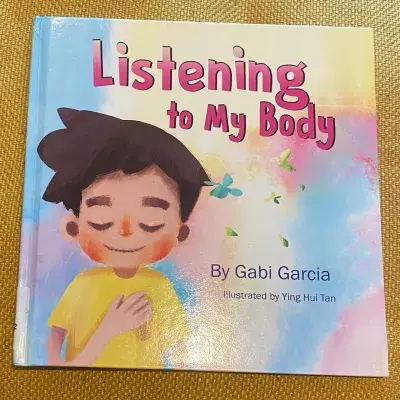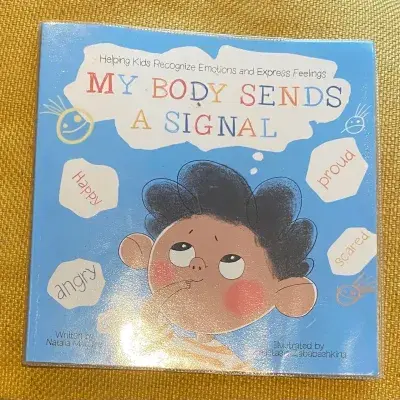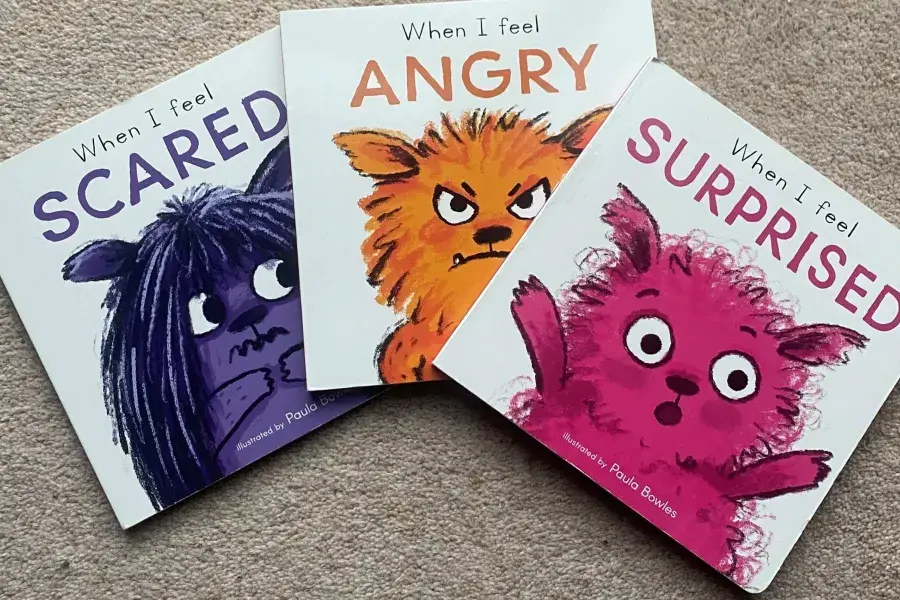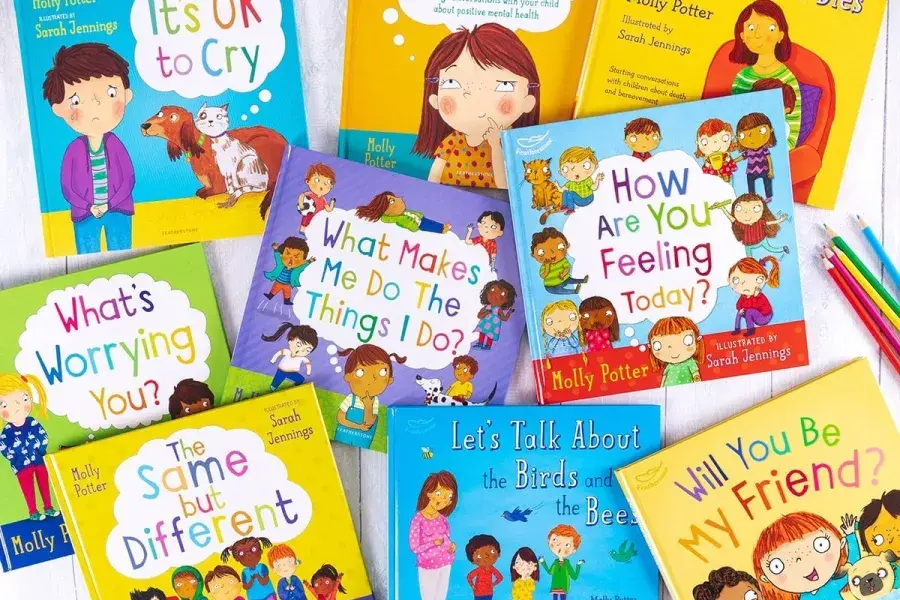Connecting Sensations to Emotions
As we continue our series on resources to support emotional regulation (click here to recap on an overview of the series), we will be taking a look at two books that take slightly different approaches to helping young people join up the feelings they are experiencing in their body to the feelings in their mind. As with the other books we have featured in parts two and three, their aim is to help readers make better choices about how to respond to those feelings.

First up we have ‘Listening to My Body’, written by Gabi Garcia and illustrated by Ying Hui Tan. This book describes itself as being designed to help children ‘understand the connection between sensations and feelings so they can get better at figuring out what they need’.
It begins with a note for parents and teachers that gives ideas of ways of supporting children to ‘listen’ to their body. Guiding questions are included to help them make the connections. The book then follows an androgynous young character talking through the sensations and feelings they notice when they pay attention to their body in different situations. Many pages include practice ‘exercises’, in which the reader is asked to do activities that generate sensations in their body, such as rubbing their hands together to build up heat, or jumping up and down to raise their heart rate. They are then asked to pay attention to how it makes them feel.
The narrator goes on to share examples of situations in which they felt particular emotions and the accompanying sensations they experienced in their body, as well as what they did to get back to a place of calm or relaxation. The final pages include exercises to build vocabulary around feelings and ideas for activities to help with emotional regulation.

‘My Body Sends a Signal’, written by Natalia Maguire and illustrated by Anastasia Zababashkina, uses a similarly androgynous young character narrating in the first person, but telling more of a story. The story walks through a series of events that took place over the course of a couple of days (from a scary trip to the zoo to an argument with their sister), each resulting in different emotions. With each one, the narrator describes the sensations they experienced in their body as they felt that emotion.
Again, this book starts with an introductory letter to the ‘grown-up’. It explains emotional regulation and introduces the concept that emotions are linked to feelings, all of which are fine but can be expressed differently. Hopefully this concept is now a familiar one to readers of this series.
‘My Body Sends a Signal’ also includes a whole host of resources and hands-on activities at the end - emotions cards, feelings cards, short stories and colouring pages (one for each emotion, featuring the star of the story in the different situations they experienced).
Both of these books have similar goals, to build children’s confidence and support them in making mind-body connections in order to improve their emotional regulation while also building their vocabulary to support them talking about feelings. Both are written in American English but the vocabulary should be easily accessible to readers from the UK, and children as young as three could get something out of the activities and exercises included in each.
An Interview with Gabi Garcia
Our volunteer Rachel reached out to Gabi, author of ‘Listening to My Body’, to dive a bit deeper into the story behind the book. Here is an extract of what she had to say:
What originally inspired you to write 'Listening to My Body'?
At the time (around 2011), I’d been a yoga practitioner for about 10 years and was also immersed in learning about the body’s role in therapy. I was interested in incorporating this into my work with the students I was seeing as a campus-based counselor and looked for a children’s book that I could share with them. I couldn’t find a book that encapsulated what I was looking for, so I decided to write one. I used a hand drawn mock-up of 'Listening to My Body' for a few years before it was published.
Who would you say the book is primarily aimed at?
'Listening to My Body' is aimed at all children. In the same way that we know the importance of teaching children to identify and communicate their emotions, I believe it’s equally important for them be able to pay attention to what their bodies are telling them and communicate it.
Developing sensory awareness and having a vocabulary that names what they’re experiencing is necessary. This awareness goes hand in hand with emotional awareness and is key to helping children figure out what they need.
How do you think parents and carers can get the most out of this book, working with their children?
I think it’s important for parents and caregivers to practice and model listening to their own bodies, which can be more challenging than it sounds. When we become upset, do we notice the tightness of our muscles, our breath or the temperature of our bodies before we engage or respond to something?
There’s a note at the beginning of the book that asks the adult to read the book ahead of time and do the practices before introducing it to kids. I’ve gotten so much feedback from adults who picked up 'Listening to My Body' for their child, student, or grandchild and realized that this was helpful to them! Many of us (me included) who are supporting children didn’t get this knowledge as kids, but that doesn’t mean it’s too late to learn.
The other thing I’ll add is that the person reading the book knows their child best. For some children, reading the book all at once makes sense. For others, it might make sense to divide the book to give time for the experiential activities.
What if any aspects do you think might be particularly relevant for young people with a neurodivergence?
At the time of writing it, I didn’t have neurodiversity on my radar. What I later learned is that many young people with neurodivergence navigate challenging sensory environments all day long. Their brains and bodies can feel dysregulated by all the sensory input they’re getting. It’s especially important for them to learn to pay attention to the sensations they’re experiencing so that they can figure out what sensory input is regulating and what’s dysregulating for them.
If you would like to purchase any of the books mentioned in this review, please take a moment to raise a free donation for The Neurodiversity Family Hub by using our affiliate links above to purchase through Waterstones, or purchasing through our easyfundraising page and searching for your preferred online retailer.
Finally, we hope you can join us at one of our youth groups. Tiny Tribe, our stay and play group for parents and carers with children 0-5 years old, takes place every Wednesday in term time from 10:00am to 12:00pm. My Tribe takes place every Thursday in term time. My Junior Tribe (aged 6 to 10) meet from 3:30pm to 5:15pm and My Tribe Teens (aged 11 to 18) meet from 3:30pm to 6:30pm. All meet in Mint Street Adventure Playground in Borough (SE1 1QP).




